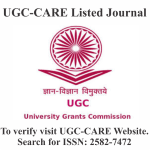ICONOGRAPHY OF TWELVE SCULPTURES OF THE STATE MUSEUM OF BHUBANESWAR
DOI:
https://doi.org/10.29121/shodhkosh.v5.i1.2024.1076Keywords:
Varaha, Krishna, Vishnu, Chamunda, Parvati, Images, Dharmasala, Bhubaneswar, OdishaAbstract [English]
The iconography of six Shakta and six Vashnavite sculptures of the State Museum of Bhubaneswar is the main aspect of Odishan sculptural art in Eastern India. Saktism is a very important cult among the Hindus in all over Odisha as well as India. The beginning of Sakti cult in Odisha may be traced back to the days of Mahabharata. The growing popularity of the Sakti cult in Odisha is evident from the placing of independent sculptures of Sakti. The State Museum of Bhubaneswar has preserved a good number of the Sakta sculptures, which are collected from the different parts of the state. Among these, six Sakta sculptures are discussed in this article. The Vaishnavism was become widespread in the state of Odisha in the past. The cult of Gopinath Krishna was made popular during the Ganga era of Odiasha. The Ganga period marked the climax of Vaishnavism in Odisha. Some of the Vaishnavite sculptures are collected from different parts of Odisha and now these are preserved in the State Museum for public display. Among the preserved Vashnavite sculptures of the State Museum, two Varaha, two Krishna and two Vishnu images are also discussed in the present article. The above twelve sculptures of state museum are the well workmanship of the sculptors of the medieval Odisha. In fact, the above twelve sculptures are very important for iconographical study. That is why; the aim of this article is to highlight the iconography of twelve preserved sculptures of Odisha State Museum, Bhubaneswar.
References
Banarjee, J. N. (1974). The Development of Hindu Iconography, New Delhi.
Behera, K.S. (1982). “Traditions in Sculpture”, in Art Tradition of Orissa, Edited by Orissa Sahitya Akademi, Bhubaneswar.
Behera, K.S., & Donaldson, T.E. (1998). Sculptures Masterpieces from Orissa, Style and Iconography, New Delhi.
Bhattacharya, N.N. (1974). History of Sakta Religion, Munshiram Manoharlal, Delhi.
Blurton, T. R. (1993). Hindu Art, Harvard University Press.
Das, H.C. (1981). A Guide to Orissa State Museum, Orissa State Museum, Bhubaneswar.
Das, H.C. (1997). Iconography of Sakta Divinities, Vol. I, Prativa Prakasana, Delhi.
Donaldson, T.E. (2000). Tantra and Sakta Art of Orissa, Vol. I, New Delhi.
Donaldson, T.E. (2001). The Iconography of Vaishnava Images in Orissa, New Delhi.
Rao, G.T.A. (1914). Elements of Hindu Iconography, Vol. I, Part-I & II, Second Edition, The Law Printing House, Madras.
Mishra, O.P. (1989). Iconography of Saptamatrikas, Agam Kala Prakashan, Delhi.
Mohapatra, R.P. (1986). Archaeology in Orissa (Sites and Monuments), Vol. l, New Delhi.
Panigrahi, K.C. (1985). History of Orissa, Kitab Mahal, Cuttack.
Sastry, H.K. (2003). Indian Images of Gods and Goddesses, Delhi.
Published
How to Cite
Issue
Section
License
Copyright (c) 2024 Ratnakar Mohapatra

This work is licensed under a Creative Commons Attribution 4.0 International License.
With the licence CC-BY, authors retain the copyright, allowing anyone to download, reuse, re-print, modify, distribute, and/or copy their contribution. The work must be properly attributed to its author.
It is not necessary to ask for further permission from the author or journal board.
This journal provides immediate open access to its content on the principle that making research freely available to the public supports a greater global exchange of knowledge.




















